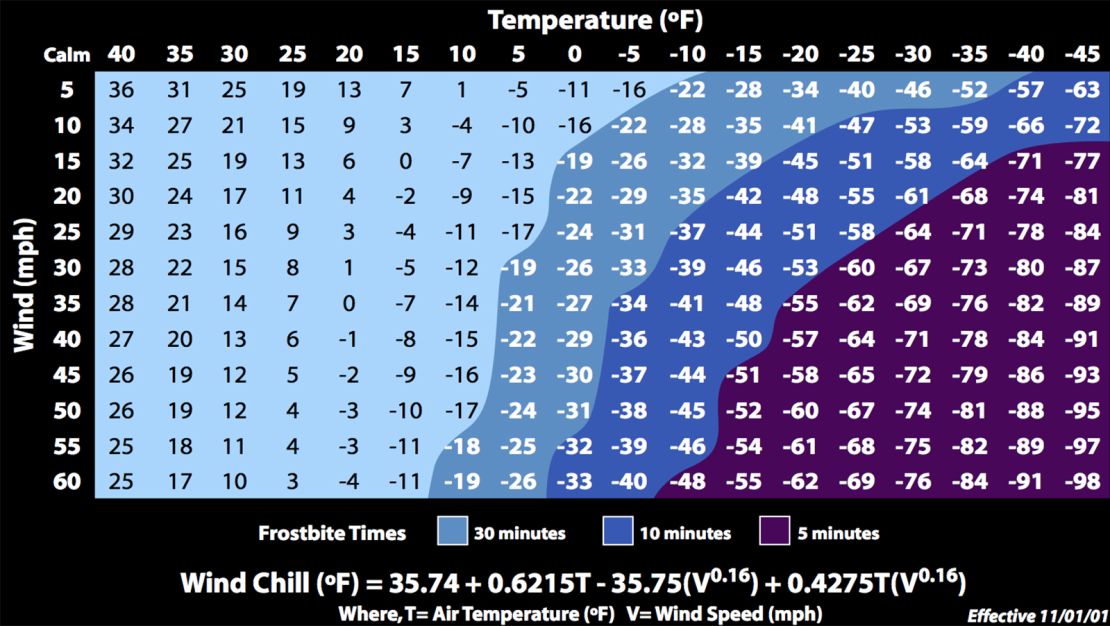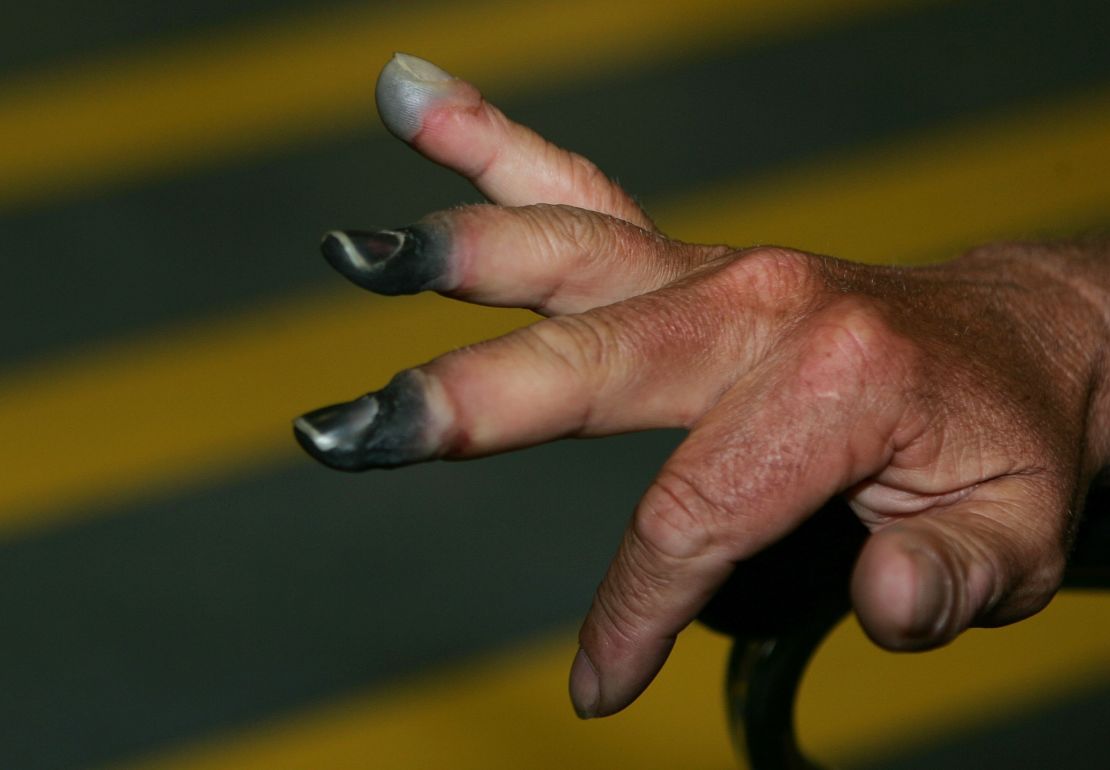It’s COLD. We’re talking dangerous cold. Cold that might rob you of the tips of your nose, ears, chin, fingers or toes if you’re not careful. Called frostbite, it happens when the skin and tissue under it freezes, which can happen much more quickly than you might imagine.
Cold and wind chill
Frostbite is not only dependent on the outside temperature; it’s also affected by the wind chill factor. As the speed of the wind increases, our bodies cool at a faster rate, causing the skin temperature to drop. Higher altitudes can also affect the speed at which skin can freeze.

The National Weather Service has created a wind chill chart that shows the time it might take to develop frostbite at varying temperatures and wind speed. The index was tested on human face models.
For example, if it was zero degrees Fahrenheit and calm, your chance of frostbite is relatively low. Add wind at 15 miles per hour, and it would take only 30 minutes before frostbite sets in. If the wind rose over 50 mph, it would take a mere 10 minutes for frost to bite.
Your skin would freeze in a scant five minutes if you were out in minus 25 degree weather with a wind speed of just over 25 mph.
Who is at risk?
You are more susceptible to frostbite if you smoke, take medications called beta-blockers, have poor blood supply to the legs, or have diabetes or Raynaud syndrome, a condition in which strong emotions or cold temperatures cause blood vessels to spasm and block blood flow to extremities.
Older people and the homeless without proper clothing, heating and food are also at high risk, as are hikers and hunters who aren’t properly clothed and stay outdoors too long. The US Centers for Disease Control and Prevention also warns that anyone who drinks excess alcohol or uses illicit drugs is at high risk; while you may feel like your body is warmer, your core temperature and blood pressure actually drop.
And of course you are more likely to get frostbite if you aren’t dressed properly for the weather. The CDC has a visual chart that shows the critical areas to keep covered in extreme cold.
The stages of frostbite
The first stage of frostbite is often called “frostnip” and begins with redness and a pins-and-needles feeling. Get out of the cold quickly at this time to avoid further damage to the skin.

A mild nip could be warmed up with your own body heat; try sticking those fingers into your armpit, for example. Rewarm those red toes with a soak in warm – never hot – water for up to 30 minutes. Since you won’t be able to tell with those zapped toes, test the water with another part of the body to be sure it’s comfortable. Rewarm ears, nose and cheeks with warm cloths; re-soak and reapply repeatedly.
Be prepared for a bit of pain as the frostbitten areas come back to life. You’ll know when warming is complete when the skin is soft and all feeling has returned. But don’t use stoves or warming pads, the CDC warns. Those numb bits can’t tell the temperature, and they could easily burn as they warm up.

Superficial frostbite is the second stage. It’s known as second-degree frostbite and begins when your skin begins to turn pale white or grayish-yellow instead of red. It might even begin to appear blue. Crystals of ice are beginning to form in the skin, and it may become hard and numb to sensation. Some people say it feels “waxy.”
Because the pain and redness are subsiding, unfortunately, people often don’t realize what is happening to them. But soon, the skin might warm and begin to swell, which is a sign that damage to tissue is occurring. This is the time at which prompt medical treatment is needed to prevent further, more serious damage.

Immediate rewarming is key, but it should be done carefully by trained medical professionals, who will immediately wrap the injured area to protect it. At times, blisters filled with fluid can develop, and the skin can sting, burn and swell dramatically.
Deep frostbite is the next stage, in which the skin can appear blue and mottled, and numb to pain and cold. Blood-filled blisters can form. Muscles next to the area might fail to work properly. At this point you are in danger of blood clots and will need anti-clotting medications to increase blood flow to the area.
Get CNN Health's weekly newsletter
Sign up here to get The Results Are In with Dr. Sanjay Gupta every Tuesday from the CNN Health team.
Medical attention is crucial at this stage to avoid amputation of the injured tissue. Depending on the severity of the injury, the tissue can look black and feel hard after it’s rewarmed. If the tissue has died, a process called gangrene,then the dead areas may have to be excised or amputated. At times, there can be long-lasting damage to muscles, tendons, nerves and bones in the area as well.
If medical care isn’t around
If medical care isn’t immediately available, wrap the affected areas in sterile dressings, carefully separating injured fingers and toes from each other. But try to move the affected areas as little as possible to avoid further tissue damage.
If a frostbitten area is warmed and then refrozen, damage can be even more severe. According to the US National Library of Medicine, if refreezing is not guaranteed, it might be best to delay the initial warming process until a warm location can be found. Warm drinks are best for replacing lost body fluids.
Two more warnings from the CDC: Don’t rub with snow or otherwise massage any frostbitten areas. You’ll just make any tissue damage worse. The same applies to walking on frostbitten feet or toes, so avoid that unless absolutely necessary.
Be sure to check out our winter safety list as well.



